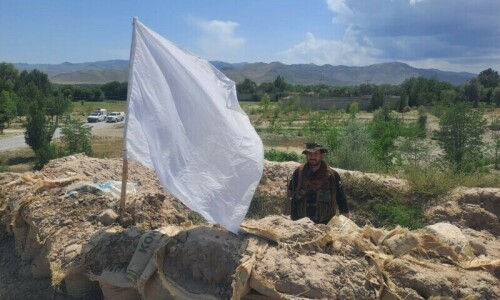 THE plant “Coriandrum sativum Linn” belongs to the family Umbeliferreae.
THE plant “Coriandrum sativum Linn” belongs to the family Umbeliferreae.
It is known as coriander in English and Dhania in Urdu. In the US, it is known as Cilantro – a word derived from the Spanish language. It is believed to be a native to southern – western Asia to North Africa. It grew wild in the northern-eastern and the southern part of Europe. Coriander seeds found in ancient tombs in Egypt revealed that it was cultivated in Egypt in the 10th Century BC. The Greeks grew it since the second millennium BC. It was brought to England by the Romans as a meat preserver.
Coriander is an upright and branched annual plant that grows to a height of 50 cm. The leaves of the plant in our rural and urban areas are used to make chutney. The whole plant is aromatic. The flowers are small, white and pink in colour produced in umbels. The seeds on getting dried turn beige in colour. The green leaves are also used in salads, soups and prickles.
Most of housewives give a generous sprinkling of the green leaves on cooked dishes of meat, pulses and vegetables before they are served. The seeds are also used in thickening and flavouring soups, curries and liquors. The stems of the plant are used in cooking in Vietnam.The roots have little use in our cooking, but the Thais greatly relish them in their cuisines. Thus no part of the plant goes waste.
Climate/soil: The coriander plant is well-adapted to the tropical and sub-tropical climatic conditions. Fertile soil with adequate organic matter, sunshine and freedom from water-logged conditions are best suited for its growth.
Distribution: Coriander crop is widely distributed throughout the world. Some of the important coriander producing and exporting countries are: India, China, Afghanistan, Indonesia, Iran, Turkey, Tanzania and Bulgaria.
Pakistan is comparatively a small producer of coriander, although it is grown throughout the country. During the year 2004-05 approximately 2,9000 tons of coriander was produced, utilising 5,600 hectares. During 2005-06, the production was reduced considerably.
Export: Pakistan, despite its limited production, has exported coriander seed/powder to the neighboring countries. During the last five years, the country exported as much as 334.2 tons of coriander seed valued at Rs20 million.
Import:
Years Quantity Value ‘000’
in Tonnes Rupees
2002-03 5752.0 37442
2003-04 5738.0 76148
2004-05 11606.5 193513
2005-06 12412.0 142194
2006-07 8211.6 118099
From th table, it will be observed that Pakistan has imported more of coriander seed/power during the last five years, than it has exported during the same period. During the year 2004-05 and 2005-06 import showed an upward trend. Thus the drain on our exchange is obvious.
Chemical composition: The nutritive value per 100g energy Kcal (100 kg) of fresh coriander leaves is as follows:
Carbohydrates = 4 g
Dietary fiber = 3 g
Fat = 0.5 g
Protein = 2 g
Vitamin A (equir) = 337 ug 3 7%
Vitamin C = 27 mg (45 %)
Medical benefits: As a household remedy, coriander is considered carminative, diuretic and tonic. Seed kernel is used as a breath-freshener. The volatile oil gives relief in rheumatic and neuralgic pains. Coriander is an important ingredient of our indigenous stomach powders and pills used in stomach disorders. A decoction of the dried seed is given in bleeding piles. A poultice of the seeds is applied in ulcers. In the Iranian folk medicine, coriander seed is used to give relief of anxiety and insomnia.
Remarks: Coriander is an indispensable spice in the oriental as well as in continental cuisines. It is popular among the poor and the rich alike. It is commonly used in the Middle East, Mediterranean, Latin America, Chinese and African cuisines.
To reduce it annual imports which are a drain on our foreign exchange, we need to boost coriander cultivation and production by modern means of crop improvement, which do not seem to have reached the growers to benefit from. The crop needs attention of our researchers to give better varieties to replace the indigenous stock for better production and export.















































